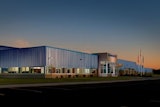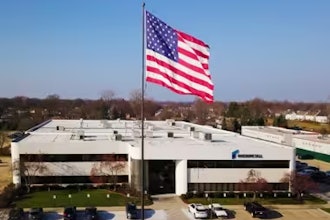The iPhone Health application, location-based advertisements, autonomous cars, automatic car controls — these are all automated product trends that today’s generations have come to expect and can’t imagine living without. Similarly, leaders in the material handling industry are wondering if automation will continue to revolutionize the way warehouses work now, and for years to come.
Many companies think that without automation, their company might fall behind their competitors. It’s no secret that regardless what kind of products your warehouse services the application of automation can likely make production and distribution processes quicker, easily repeatable, consistent and cost-effective. But, should it always be the next investment?
As technology evolves, the advantages of using semi- and fully automated solutions to increase productivity and address the labor shortage are clear. But, before getting too invested in the latest material handling trend, there’s a crucial step that must happen first: optimization. An optimized warehouse creates more space for product, increases workforce productivity and leverages lift trucks for the best suitable task — all of which, ultimately, drives cost savings that can then be used to eventually invest in automation.
Here are a few ways to first optimize your warehouse and then determine if automation is the best next step for you.
Use Data and Technology to Establish Baseline Efficiencies
You can’t optimize what you don’t measure. Even the most advanced technologies can’t make your warehouse more efficient if you don’t know how to measure, interpret and implement the data and findings. If your warehouse team has not been consistently tracking fleet utilization, operator performance, impacts and scheduled maintenances, it is more difficult to measure opportunities for efficiency improvement — and to justify the associated costs.
Telematics solutions and integrated truck technology have become driving forces in the decision-making process. The data these systems gather sets a baseline to identify issues — such as hidden costs and missing hours — that are impacting your company’s bottom line. Once you have a baseline established, you can pinpoint facility and operating inefficiencies and determine opportunities for labor and fleet optimization. These operational enhancements go a long way in optimizing your warehouse so when you decide automation is right for your facility, you make the most of your investment.
Right-Type and Right-Size Your Fleet to Save Time and Money
Telematics data can also be used to expose equipment inefficiency patterns and assist with right-typing your fleet. For example, buying new equipment for a larger fleet isn’t always the answer. Nor is using counterbalanced trucks to perform pallet jack functions because you currently own only counterbalanced trucks. Before making any big decisions about how much and what type of equipment you need, consult the telematics data. This information can help determine if your current fleet is meeting your load capacity needs and if the right trucks are being used for the right tasks. If you have the right number of trucks but need to upgrade their capabilities, also consider what new features and attachments can be retrofitted to existing equipment. This could save you from having to buy an entirely new truck.
Another aspect of fleet right-sizing that telematics systems can help with is determining when it is better to rent, lease or buy equipment. Telematics monitor peak operation seasons and evaluate when you may have heightened equipment needs. Right-sizing your fleet to fit day-to-day needs, and potentially renting equipment when necessary, can save on maintenance and truck costs. It will also make introducing automated trucks much easier in the future because the warehouse equipment inventory will be optimized for its workload.
Control Cost of Ownership and Upgrade to New Technology Offerings
When you need to upgrade your fleet, leasing can bring added value. Leasing allows customers to pay for equipment as it produces, helping optimize cash flow. In addition, leasing can help ensure planned equipment updates to control cost of ownership, take advantage of new, more efficient technology and avoid obsolescence.
As you think about your next equipment needs, remember an operating lease helps improve the affordability of emerging technologies such as integrated telematics, reach trucks that store heavier pallets higher within a warehouse and smart truck options like pick-to-light technology that can help minimize pick errors — leaving you free to update again at the end of the lease to the next product generation. With little to no money down, leasing provides an alternative funding source to keep your fleet running longer and using the latest and greatest advancements. All of these equipment utilization efficiencies will make it easier to automate when you determine the time is right.
Ultimately, there are many advantages automation can bring to a warehouse, but managers will fail to realize those efficiencies without optimizing as a necessary first step. Fortunately, numerous tools and data are available today to measure productivity and make proactive changes to operations before investing in automation. By studying key data and establishing baseline measurements today, your facility will be better prepared for automation tomorrow.
Chris Merta is the product manager, automation, at The Raymond Corporation, and John Rosenberger is the director of iWAREHOUSE GATEWAY and Global Telematics, The Raymond Corporation.






















